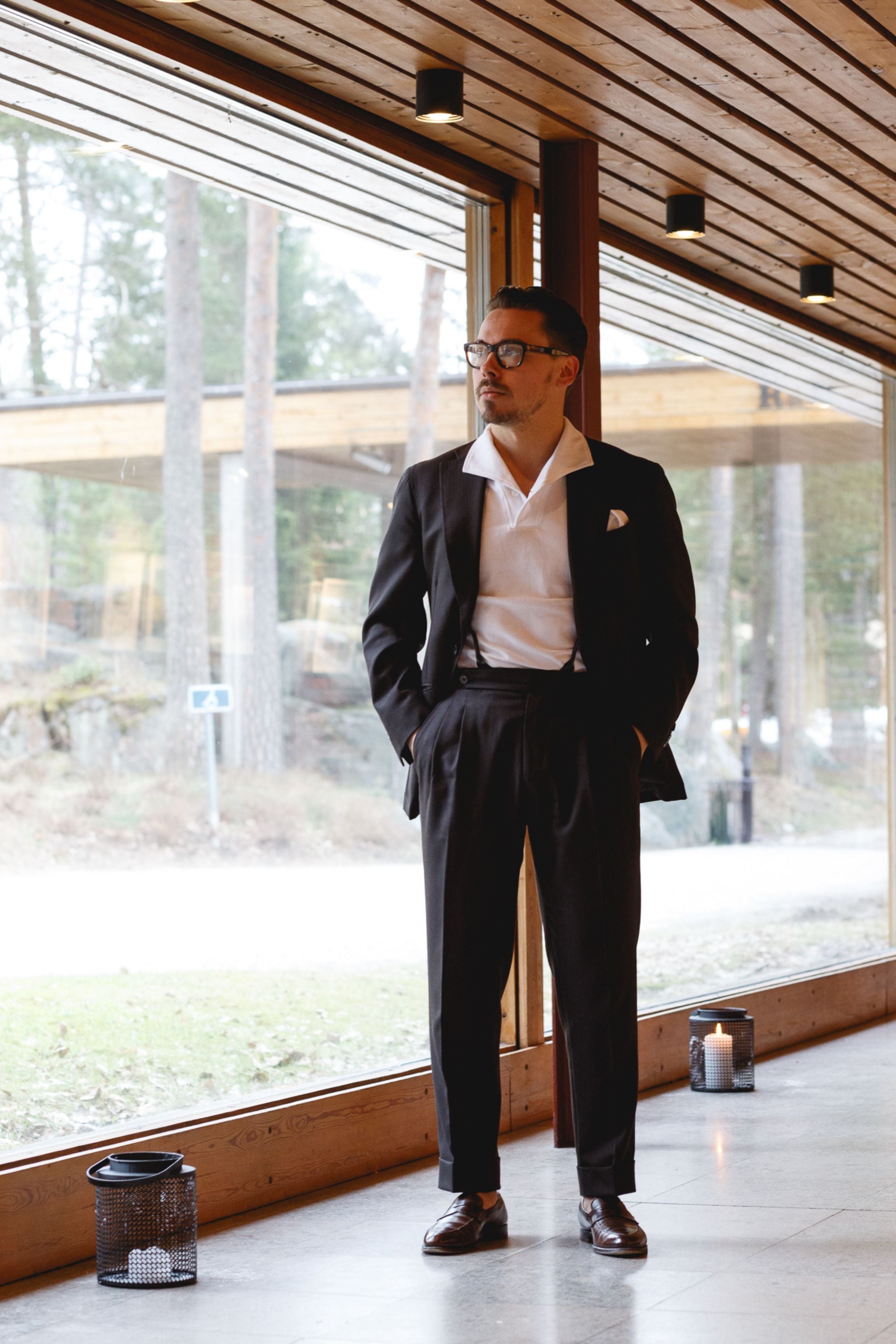Polo shirt is one of the most classic pieces in men's summer wardrobe. Today it is again more current and you could say also more trendy than for a long time. In this post I take a look why.There might have been times that the polo shirt has not received the attention it merits. But based on the collections and street style shots seen during the recent seasons it seems that polo shirts (in various forms) are back again. One of the reasons for the popularity is probably the simplicity and versatility of the shirt.
As the summer keeps coming it's a good time for a few words about polo shirts. This post is originally from 2015 but I have updated with new shots and some new ideas as well. 
Short history of the polo shirt
The polo shirt (or pique shirt) is also known as a tennis shirt. Even though the history of the polo shirt is partly unclear, most of people give the credit of inventing the polo shirt for the French tennis player Rene Lacoste.
Lacoste wore the shirt to the 1926 US open championship - which he in fact won - to replace the old "match costume". The match costume at that time used to be a white long sleeve button-up shirt, usually worn with sleeves rolled up.
By going from the unpractical button-up shirt to more comfortable short-sleeved polo shirt Lacoste created a new trend. A trend which became a sensation. After his tennis career in 1933 Lacoste founded a company named La Societe Chemise Lacoste (known as Lacoste Shirt Company) together with his friend Andre Gillier. The company started to produce similar soft shirts than the one Lacoste worn in 1926. The shirts they produced were recognizable for the little crocodile on the chest of the shirt. This iconic logo was inspired by Lacoste's nickname "Le Crocodile". 
From tennis courts to polo fields
Soon after these new shirts had developed as a trend among tennis players other sportsmen followed. They began to replace their traditional outfits with the Lacoste tennis shirt. The most notable of these athletes who took the new trend as their own happened to be polo players. Polo player who before that had favored heavy cotton button-down shirts. Polo players widely adopted the pique woven cotton shirts. And as they kept wearing the shirts after games as well - the trend started to spread outside sport circles.
And so polo shirt came appropriate for casual wear in general. By the late 1940s the term "polo shirt" became a standard to describe these soft pique-cotton collared shirts. And these shirts were not only worn by polo players but by anyone fond of this soft collared shirt. 
Today there are multiple different kind of polo shirts on the market. The range differs from long-sleeved pieces made of fine merino wool to really casual options made of terrycloth. But the polo shirts made according the "original" model are usually made of pique fabric with short sleeves, soft collar and two or three buttons on the front of the shirt.
The pique fabric itself refers to the weaving style of the cotton cloth. The fabric made this way is characterized by fine ribbing or raised parallel cords that in the cloth result as a finely textured surface. 
How to use a polo-shirt
Polo shirt is an ideal choice for those warm and pretty summer days. And it is versatile. First of all you can wear it casually with jeans as a replacement for a t-shirt. Or you can wear it instead of a dress shirt when you leave from the office for after work. Nowadays many brands and manufacturers also have long-sleeved versions on their selection that are perfectly appropriate to wear with a sport coat. Or to combine even with casual and more relaxed suits.
As with most of garments there are in menswear, the key to pulling off a polo shirt is on the right fit. The most optimal choice is to go for pieces that are slightly trimmer in the body and feature sleeves that hit and slightly squeeze around the middle of your biceps. 
Pay attention to the fit
In terms of length the right answer depends o whether you want to tuck in your shirt or wear it untucked. For more casual wear and combinations I suggest to wear the shirt untucked. In this case just be sure that you choose a shirt wear the hemline is even and where the hemline ends around on the level of your hips. Also make sure that the hem does not lop or float around but fits and settles nicely. If you are going to wear the shirt under a blazer or a sport coat, make sure it is tucked into your trousers.
And even though the Lacoste polo shirt was one of the first pieces of clothing where the logo of manufacturer was clearly presented I dare to claim that simplicity is a virtue in terms of choosing a right piece of polo shirt as well. Nowadays there are multiple choices with big logos and striking stripes or patterns on the market. But don't go for those. Instead choosing a plain one-colored shirt in restrained tone is the right way to do this. 
How I like to wear my polo shirts
As with many other items I have noticed that my attitude towards polo shirts have changed during the years. When I was younger I wore them quite a lot. The classic Ralph Lauren shirts were key pieces in my summer wardrobe. I paired them with jeans, chino trousers, shorts and sneakers. And I still think these are valid combinations for sure. Especially for a young man a good classic polo shirt is a good investment.
At some point I lost my interest for polo shirts. The biggest reasons was that my style developed to more formal and business-oriented direction. And due to the fact that I didn't like to wear the classic polo shirt with a sport coat or with a suit, I dropped the polo shirts. And I still don't. Most of the classic polo shirts made of the soft pique fabric feature quite small and many times too sloppy collars. That kind of collar does not look good when you wear it under a jacket or even under knitwear. So I basically invested in good button-up shirts. And when I needed to wear something casual with jeans for example, I just rolled up the sleeves. 
Modern polo shirts - the one-piece collar shirt
But now I have started to like the polo shirts again. But not really the most classic ones. Instead I have acquired many "modified polo shirts". By modified version I mean shirts that feature a bigger collar, jersey cotton or merino wool material instead of the pique fabric and also longer placket and more buttons in the front. This kind of shirts (as you can see from the pictures in this post) are in my opinion perfect options to wear for occasions when you want to wear something that is casual but still refined and dressed-up.
One of my recent purchases was a so called one-piece collar shirt made by Simon Skottowe Tailors. With this kind of shirts the collar is made from a single piece of material that flows from the placket on the front, up into the collar. And round the neck and down again. This gives the shirt a very different feel compared to a shirt with its separate placket, stand and collar. And it also gives it a different kind of look. The best aspect in my opinion is that this kind of a polo shirt you can easily wear also under a jacket. And you can wear the collar under the jacket collar. Or pop it up and out. However you happen to like it.
Sum up - check list for how to make the polo shirt work
As a sum-up a few simple points that I recommend to keep in mind when you choose your next polo shirt.- Pay attention to the fit
- Choose a plain - one colored shirt
- No big logos (or fakes)
- Choose a big enough collar
- Never wear a polo shirt for a formal business meeting (it is always however a casual shirt)
You can find the original post in Finnish from tyylit.fi.
Pictures by Malin Sandberg and Juha Kortesalo.


Leave a comment